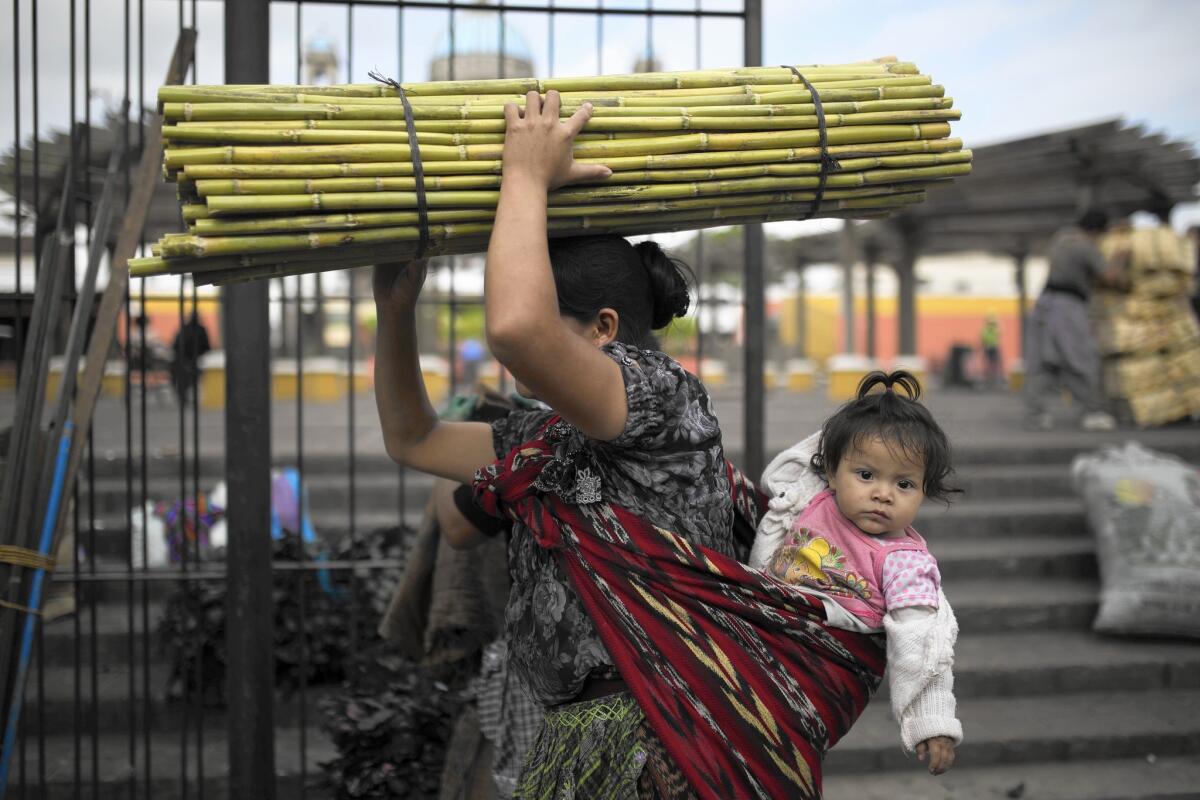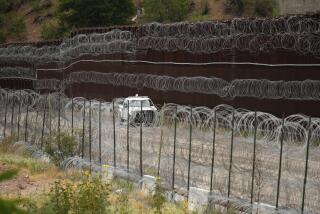In a first, U.S. starts pushing Central American families seeking asylum to Guatemala

WASHINGTON â U.S. officials have started to send families seeking asylum to Guatemala, even if they are not from the Central American country and had sought protection in the United States, the Los Angeles Times has learned.
In July, the Trump administration announced a new rule to effectively end asylum at the southern U.S. border by requiring asylum seekers to claim protection elsewhere. Under that rule â which currently faces legal challenges â virtually any migrant who passes through another country before reaching the U.S. border and does not seek asylum there will be deemed ineligible for protection in the United States.
A few days later, the administration reached an agreement with Guatemala to take asylum seekers arriving at the U.S. border who were not Guatemalan. Although Guatemalaâs highest court initially said the countryâs president couldnât unilaterally enter into such an agreement, since late November, U.S. officials have forcibly returned individuals to Guatemala under the deal.
At first, U.S. officials said they would return only single adults. But starting Tuesday, they began applying the policy to non-Guatemalan parents and children, according to communications obtained by The Times and several U.S. Citizenship and Immigration Services officials.
One family of three from Honduras, as well as a separate Honduran parent and child, were served with notices on Tuesday that theyâd soon be deported to Guatemala.
The Trump administration has reached similar agreements with Guatemalaâs Northern Triangle neighbors, El Salvador and Honduras, in each case obligating those countries to take other Central Americans who reach the U.S. border. Those agreements, however, have yet to be implemented.
The administration describes the agreements as an âeffort to share the distribution of hundreds of thousands of asylum claims.â
The deals â also referred to as âsafe third countryâ agreements â âare formed between the United States and foreign countries where aliens removed to those countries would have access to a full and fair procedure for determining a claim to asylum or equivalent temporary protection,â according to the federal notice.
Guatemala has virtually no asylum system of its own, but the Trump administration and Guatemalan government both said the returns would roll out slowly and selectively.
The expansion of the policy to families could mean many more asylum seekers being forcibly removed to Guatemala.
Experts, advocates, the United Nations and Guatemalan officials say the country doesnât have the capacity to handle any sizable influx, much less process potential protection claims. Guatemalaâs own struggles with corruption, violence and poverty helped push more than 270,000 Guatemalans to the U.S. border in fiscal 2019.
Citizenship and Immigration Services and Homeland Security officials did not immediately respond to requests for comment.
More to Read
Get the L.A. Times Politics newsletter
Deeply reported insights into legislation, politics and policy from Sacramento, Washington and beyond. In your inbox three times per week.
You may occasionally receive promotional content from the Los Angeles Times.











